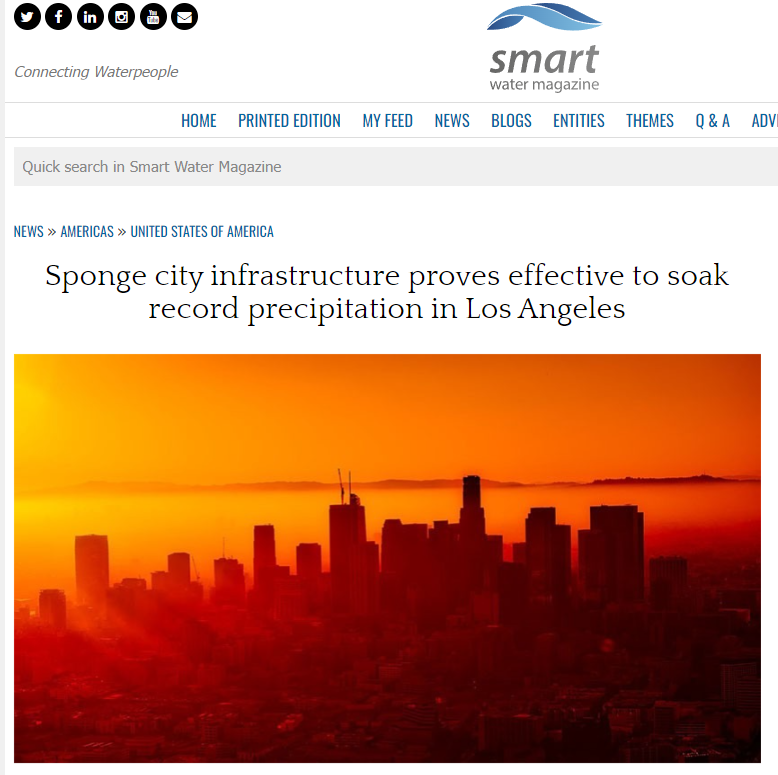smart water magazine: 事实证明海绵城市可以有效吸收洛杉矶此次创纪录的降雨量

Earlier this February, two atmospheric rivers brought extensive flooding to parts of California, as record rainfall swept through multiple areas, leading to a declaration of emergency in several counties.
Atmospheric rivers, part of the Earth’s ocean water cycle, transport moisture from the tropics to northern latitudes, and are tied to both water supply and flood risks, according to NOAA. A specific returning atmospheric river that builds up in the Pacific around Hawaii and brings heavy rain and snow to the West Coast of Canada and the U.S. is known as the “Pineapple Express”.
Two such storms hit Southern California a few days apart, but Los Angeles’ sponge infrastructure was able to capture up to 8.6 billion gallons of water, enough to supply the needs of more than 100,000 households for a whole year, Wired reported.
Sponge cities refer to urban landscapes that use nature-based solutions to retain water, slow down stormwater runoff, and improve water quality in the process. The concept is the brainchild of Chinese landscape architect Kongjian Yu, whose advocacy of this approach to address climate change accelerated urban flooding led to the adoption of the sponge cities concept as a national policy in China in 2013.
Constructed wetlands, greenways, parks, rain gardens, green roofs, permeable pavements, and other measures can act as sponges soaking up and storing rainfall instead of relying exclusively on “grey infrastructure” such as concrete reinforced riverbanks, pipes, drains, and other conventional engineering solutions to manage stormwater runoff. The benefits of a sponge city approach go beyond stormwater management to improve water quality as runoff is filtered through the soil and vegetation. In addition, rainwater can evaporate and cool the city, helping reduce the emissions of air conditioning. Green areas also act as carbon sinks and provide habitat for biodiversity and recreation opportunities.
Known by different names, such as green infrastructure or sustainable urban drainage systems, a sponge cities approach is a key part of a broader urban planning strategy to manage water resources in a sustainable manner and address urban flooding, key to ensuring city resilience to climate change. Next in the works is storing and reusing that stormwater to reduce reliance on other water sources.
